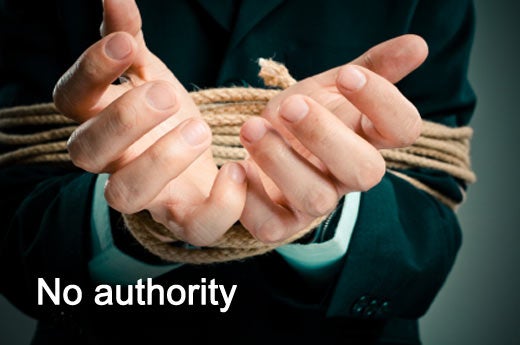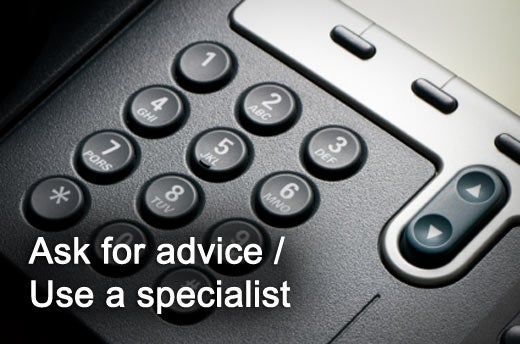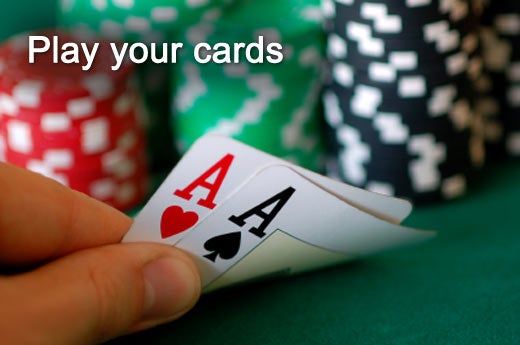
We’ve highlighted these contract negotiation strategies in this slideshow.
Click through for tips on improving your negotiation strategy.
If you don’t know what you are attempting to accomplish, it is virtually certain you won’t get there. Often, you aren’t just negotiating for a good price, but adequate quality dates that need to be met and as little aggravation as possible. Before entering into a negotiation, sit down and think about — and if it helps, write down — what you seek to accomplish and prioritize your needs.
The other side has needs, too. They want what you are selling. They may want your endorsement, they may want credit for the deal, and they may need to hit a certain commission threshold. If you know both what you want and what the other side wants and can map priorities, it sets a negotiation foundation that should get to an acceptable agreement more quickly.
It does you no good to negotiate a contract if you fail to meet deadlines for either the negotiation or for the delivery date. Know what the pressures are and who is under them to help you avoid being put at a disadvantage and having to renegotiate the deal.
Look for leverage, and not just your own. Where does the other side have an advantage? Where do you? These will be tools that you will use, or have used against you, during the negotiation.
Where are both of you most exposed? Be careful here, though, because if either side is too aggressive with a critical weakness, it can cause the relationship (or the partnership) to fail. This also might suggest that the other side can’t actually perform under the agreement even if favorable terms are reached. If that is on your side, it might suggest a job change.
What might a win/win deal look like? You are not obligated to create such a scenario, but if you know where the line is, you can make sure you don’t drift the wrong way over it. On the other hand, there are negotiators that believe that the only way to win is for the other side to lose. That might not be a negotiation in which you want to take part.
Now that you have a basis of information from which to work, craft a plan to negotiate from your strengths and against their weaknesses. Make sure that they, not you, are under time constraints. In Asia, a common practice is to wine, dine and entertain until a few hours before the opposing negotiating team has to leave, and then enter into formal negotiations. This puts a massive amount of pressure on the side that wants to get the deal done and go home.
Cash generally isn’t the most important thing on either side’s list. Deal with your priority first so that it isn’t under-prioritized and, assuming there isn’t a conflict, use theirs as a tradeoff. For a vendor, items that might be more important are hitting a volume target, getting a good reference account, getting credit for a job well done (for the team), and/or getting good publicity.
One of the key skills in a negotiator’s toolkit is leveling. This means making sure you are speaking to the other side as a peer, adjusting to the same language and appearing as less of a threat. If you don’t do this regularly, this skill will be used against you. Because it puts the other side at ease, it can be used by either side to more quickly drive to a closed deal, which ultimately is the goal. To do this, you need to listen to speaking speed, to how they approach a sentence, to what is important to them personally. Then you mirror that so you sound and act familiar and less different.
While a contract assures the deal, it is more of an emergency measure. Litigation is expensive, embarrassing and time-consuming. If you realize that you can’t trust what the other side is agreeing to, then the agreement will end badly. The best example of this was the initial Sun/Microsoft agreement on Java. Neither side could trust the other, and the result was a train wreck.
Once again, common in Asia is that the negotiating team doesn’t actually have the authority to negotiate. This is done so that additional concessions can be achieved when a team with authority does eventually show up. If the other side has no authority, you are spinning your wheels until you can get someone who does at the other side of the table.
If the company you are negotiating with is undergoing a massive management change, looks like they might be acquired by an unknown, is financially unstable, is under criminal investigation, or has other elements that, when factored in, make a relationship excessively risky — exit and find someone else.
Either side can be to blame for this and you personally should exit the process if it is your side that is being unreasonable, as it likely will reflect badly on you personally. But if it becomes clear that your opponents are being unreasonable, just walk away. It may simply be a negotiating tactic but the best response to this tactic is to exit and assume they will invite you back with a more reasonable position.
Sometimes the two sides really don’t like each other personally. This will typically end badly. It would be better to change the team out than to proceed.
Make sure milestones and penalties for missing them are built into the agreement. Identify the methods that will be used to assure this compliance. Otherwise, all you have as a defense is to sue for breach of contract. That won’t go well, particularly if the milestones that are being missed aren’t spelled out. Make sure there are intermediate remedies that don’t require you to put the entire contract at risk. Also, if those remedies are in your control, like paying or providing less, they will be easier to achieve.
Penalties and Incentives should be in most every agreement. Most folks forget the incentive part. There are often benefits that can be shared for performing early (and if they are early, they sure as heck can’t be late). Sometimes thinking through both the carrot and the stick approach can be a very effective way to drive to agreement and assure the outcome that was agreed.
Make sure there are exit clauses with penalties for non-compliance. It is no fun to have to pay two vendors for the same stuff. If the vendor you contracted with can’t perform, make sure you’ve designed in a way to bring in another and have the first vendor pay for the problem. Know and make sure the conditions that will terminate the contract for both sides unilaterally are spelled out.
Try to avoid deals where the other side has a short-term commitment that ends before the related project is complete. Often, particularly in the IT space, solutions are sold that can take years to implement, yet the vendor hands them off as a package as if you were buying a ham. No wonder most of these solutions are never implemented. Systems management tools tend to top this list. Make sure their financial and personal involvement doesn’t end when they get the money, but when you get it working.
In doing a lot of problem resolution between vendors and IT departments, one of the most common issues is that neither side knows how to escalate. People change jobs, people can get ill, priorities can change, and either side can feel abandoned. Often, this can be fixed with a simple phone call, if you know who to call. One thing to remember is that these escalation paths tend to change, as well (recall that in the BP disaster, one of the top names on the response plan was a dead guy). You may want to institutionalize revisiting this escalation path no less than annually.
Negotiation is a skill. Some may be better than others initially but, like sports, people improve dramatically with practice. If you are going to do this, do it regularly. Negotiate every chance you get and pick teams to support you that do it regularly. Negotiation is a contact sport. The more experienced you are, the better able to survive the contact you will likely be.
Don’t be afraid to ask for advice. Others have negotiated similar deals, often with the same people. Find out what works and what doesn’t. Ask for advice as to how to craft the engagement. Ask your legal team for help.
Also, consider using a specialist. You wouldn’t get heart surgery from an engineer, yet people seem to have no problem sending an engineer who has never negotiated before in as a lead negotiator. Like doctors, attorneys have specialties. Make sure your team is experienced.
If you have an advantage, play it. There is nothing wrong with having an advantage and you don’t get credit for leaving cards in your hand once the deal is done. Now, there may be a reason to play that card later in the game, but if you have a strong hand there isn’t a lot of point extending the negotiation excessively. Some people seem to think there is something unfair in using an advantage. I hope those people are not on your side.
Like driving, negotiation should be done sober. It is a practice in some parts of the world to mix negations and alcohol. Often, this is preferred by teams that have a high tolerance for it, for obvious reasons. I don’t even think the other side should be allowed to drink because they can then argue they either forgot what they agreed to or weren’t in their right minds and reverse concessions.
When your goals are reached, you are done. Move to agreement, get it signed, and exit. Often, folks feel the need to push for extra concessions and don’t recognize that this may cause the entire negotiation to go south. There is a natural tendency to believe that more could be achieved, which will occur regardless of where you exit. If you’ve done your homework correctly, you should know when to close and move to getting things signed. Don’t get greedy. Once done, don’t put off getting things signed. In fact, push for rapid closure.
























